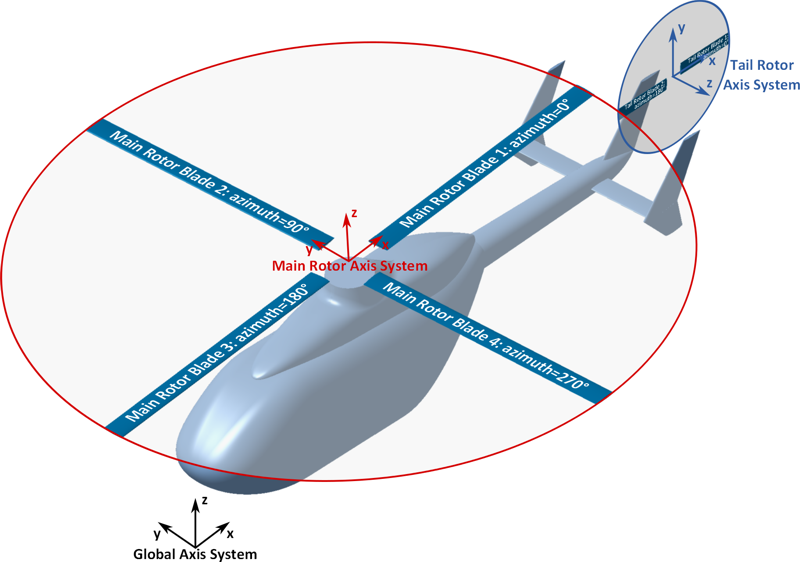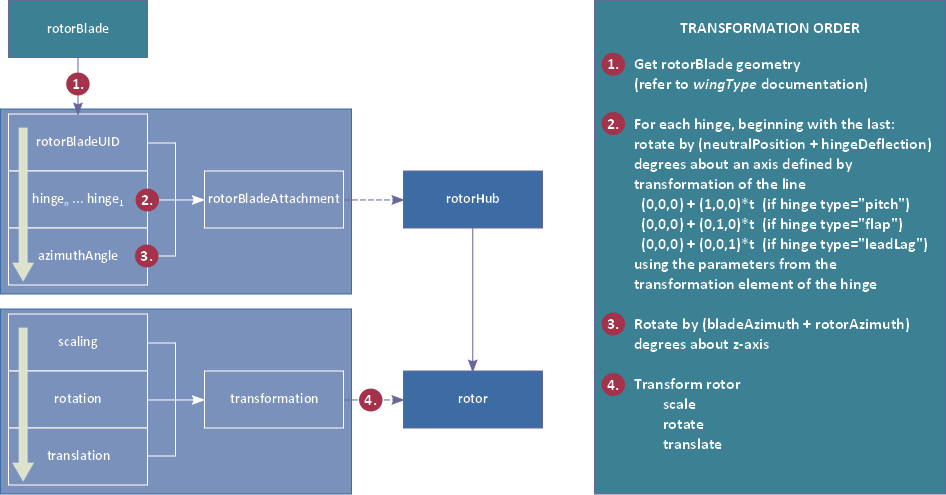| rotorElementsRotorType Complex Type |
Rotor type, containing a rotor (main rotor, tail rotor, fenestron, propeller,...) of an rotorcraft model.
Namespace: Empty
Schema: Empty
| Name | Occurrences | Description |
|---|---|---|
| | [0, 1] | Description of the rotor. |
| | Name of the rotor. | |
| | [0, 1] | Nominal value of the angular rotation speed in rotations per minute (rpm). |
| | The rotorHub element contains the definition of the rotor hub type and number and azimuth angles of the attached blades and their hinges. The rotor hub position and attitude coincides with the rotor axis system's origin and z axis. |
| Name | Type | Required | Description |
|---|---|---|---|
Symmetry (see CPACS root node documentation for details) | |||
| Yes |
Rotor type, containing a rotor (e.g. main rotor, tail rotor, fenestron, propeller,...) definition of a rotorcraft model.
The position and attitude of the rotor is defined using the transformation element. The following image shows the CPACS conventions for the orientation of rotors and rotor axis systems:

- The origin coincides with the center of rotation.
- The z-axis corresponds to the axis of rotation and thus coincides with the rotor shaft centerline. It Points in the main thrust direction of the rotor (usually upwards for a main rotor, forwards for a propeller).
- The x-axis points from nose to tail (usually rearwards for main and tail rotors, upwards for a propeller).
- The y-axis completes the right-handed orthogonal coordinate system.
Rotor hub attributes, hinges and references to attached rotor blades are defined in the rotorHub element.
Note that rotor blade geometries are only referenced and not defined in the child nodes of the rotor element. Refer to the documentation of rotorBladesType (Empty#T/rotorBladesType) and wingType (Empty#T/wingType) for information on the definition of rotor blade geometries.
The following figure shows the transformations to be applied to rotorBlade geometries to visualize them in the rotor frames for a given state (each rotor: rotorAzimuth given, each hinge: hingeDeflection given):
